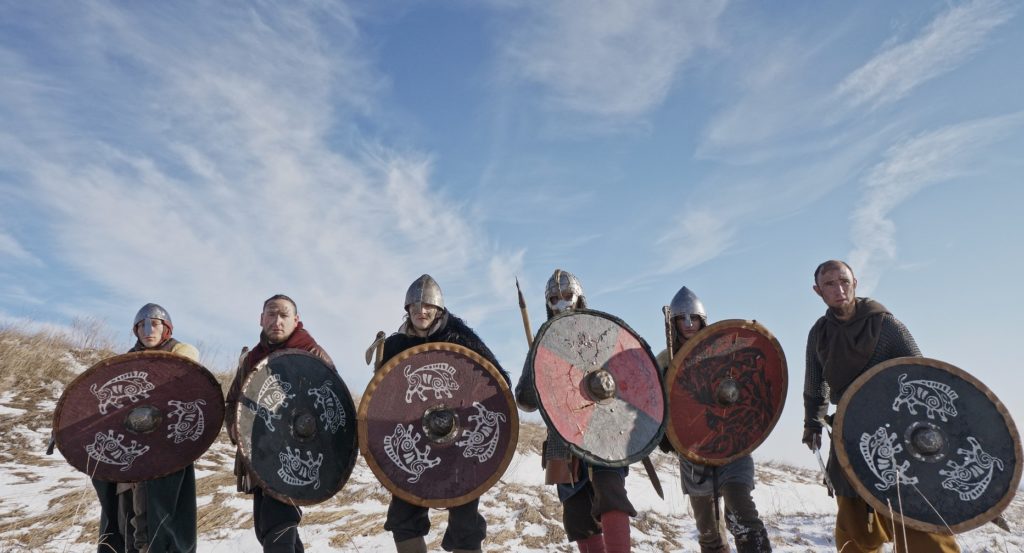
In his book Viking Weapons & Warfare, author John Kim Siddorn looks at Viking weapons from the perspective of a long time reenactor. Having used shields and spears which he built in a shield wall provides a different, and informed, view that is a delight to read.
Posts in this series:
- Spears, cost of iron
- Shields, armor
- Helmets, ships
- Money
Shield
Shields typically measured between 2’ 7” and 3’ in diameter. They were flat with several planks next to each other. Often there would be some sort of rim going around the edge.
Author makes a point I have never seen before – there is no archaeological evidence that medieval armies used laminated shields.
In other words, there weren’t several layers of wood glued or nailed together in offsetting directions.
This is in contrast to what I have read about Roman shields which consisted of several layers of wood with a leather facing.
Author goes into great detail of constructing, testing, and using shields in reenactment.
Armor
In contrast to Romans, for which there is plenty of evidence of various kinds of armor, author says there’s essentially no evidence for Vikings wearing armor. He says some soldiers returning from service in the Varangian guard probably had armor, but other than that it doesn’t show up.
He does go into detail on construction of mail armor and discusses its usage. It would require wearing padding underneath to cushion blows. Otherwise, the lack of a penetration wound would be offset by severe bruising or broken bones. A little padding provides lots of protection. Obviously all the padding in use would have long since rotted away so there would be little in the archaeological record.
It took tremendous effort to make a mail shirt. The upside is since they are made of iron they would last for a really long time. Over time a lot of such sets of armor would accumulate.
Estimate for a mail shirt late in the 11th century going down to the knees and the elbow, might have taken up to a year to construct.
Of the site one source in 1016 ED saying there were 25,000 mail shirts stored in the London Armory. Even discounting that by factor of 10, the author points out that 2,500 shirts of mail is a lot of armor to have accumulated.
Swords and scabbards
Author has fascinating 21 pages on swords, another eight pages on scabbards, and 20 pages on slings and crossbows. All of that is well worth your time to read but I won’t mention any of that info in this blog series.